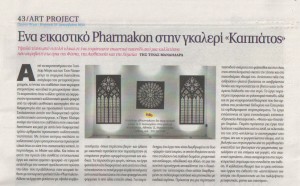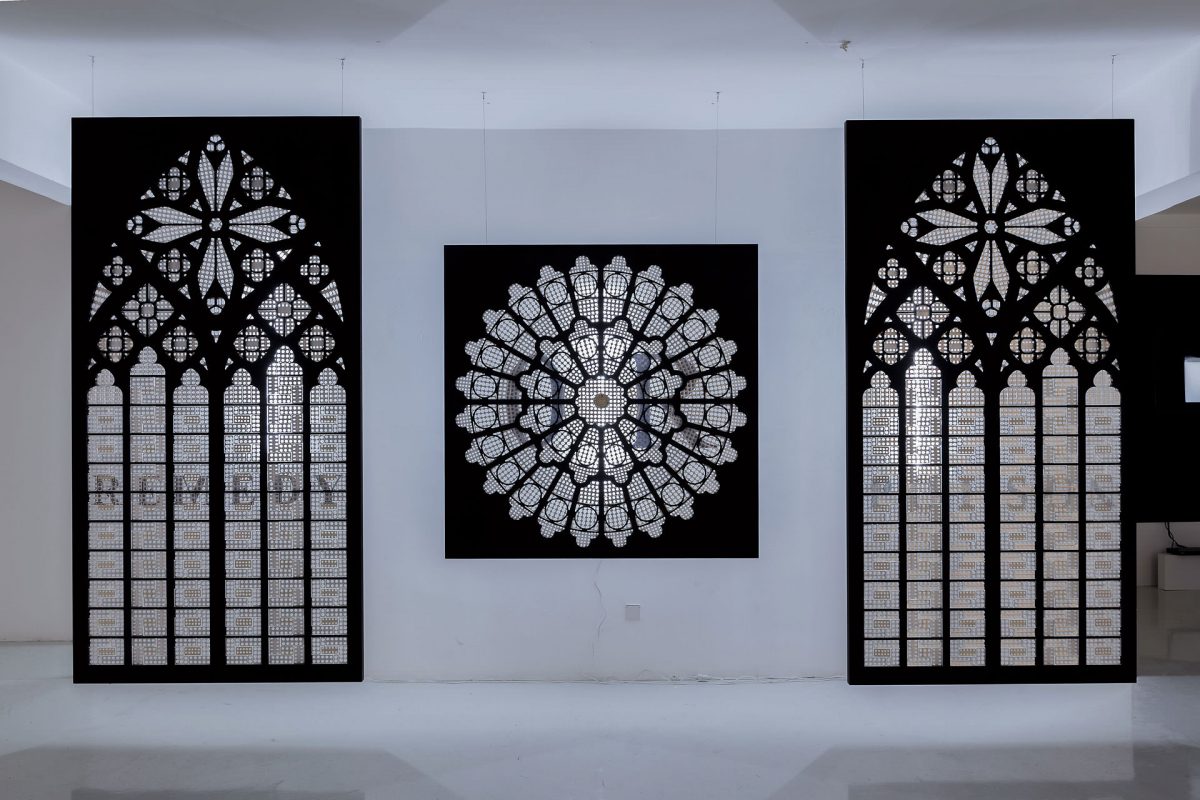Proto Thema
A visual-art Pharmakon at the Kappatos Gallery
Noble art from humble materials in an imaginative visual game by a visual artist who strikes a fine balance between Nature, Aesthetics and Chemistry
BY TINA MANDILARA
From the handicrafts of William Morris and John Ruskin to the modern-day lace reliefs of the postmodern baroque, the concept of craftivism was dominant, in modern, and especially postmodern, art. Handmade objects d’art became another way to express personal artistic voices away from the high aesthetic categories as either categories or as a protest or as personal identity. Commenting on this different way of artistic self-expression, Peggy Kliafa introduces the genre of craftivism in her artistic expression and with it a different way of formulating her personal artistic identity. With a keen sense of humour she comments on art using raw materials, such as pills or pill packaging, wrapping, blisters, etc. And based on this raw material she composes impressive works and images full of beauty – in obvious counterpoint to the humble origins of the raw material – on view in a solo exhibition entitled Pharmakon. Her works sometimes resemble noble works of art – such as elaborate stained-glass windows – and sometimes artistic propositions that evoke surfaces full of hidden secrets and codes. Most often, however, the art works seem something other than what they are: from up close one realizes that these beautiful artifacts are made of medicines or other humble materials. For instance, a work that comprises two long wallpapers, similar to those that decorate a romantic and lighthearted, idyllic and innocent children’s room, turns out at a closer look to be made up of colorful pills and bottles of cough syrup for children. This is a case of a game between seeming and being, the effective objective of of art and its playful idiom. Similarly, a human sculpture is made up of effervescent tablets and a video shows it while being dissolved in water. The work obviously refers to a philosophical game, as well as to a neoromantic view that is not content with realistic facts and transcends obvious conclusions. The works fall into three conceptual sections: “Religion-Metaphysics”, “Nature” and, “Science-Chemistry”. Although these are works on which the artist worked since 2008, the latest ones, from 2013, “drawing their iconographic positioning as well as their morphological idiom from biology, specifically from enlarged bacterial growth under the microscope, they result in new shapes and forms, new art propositions,” as mentioned in the characteristic note accompanying the exhibition. The artist states that the three sections of her works on display, “illustrate the history of therapeutics as a palimpsest of metaphysics, nature, and science.”

